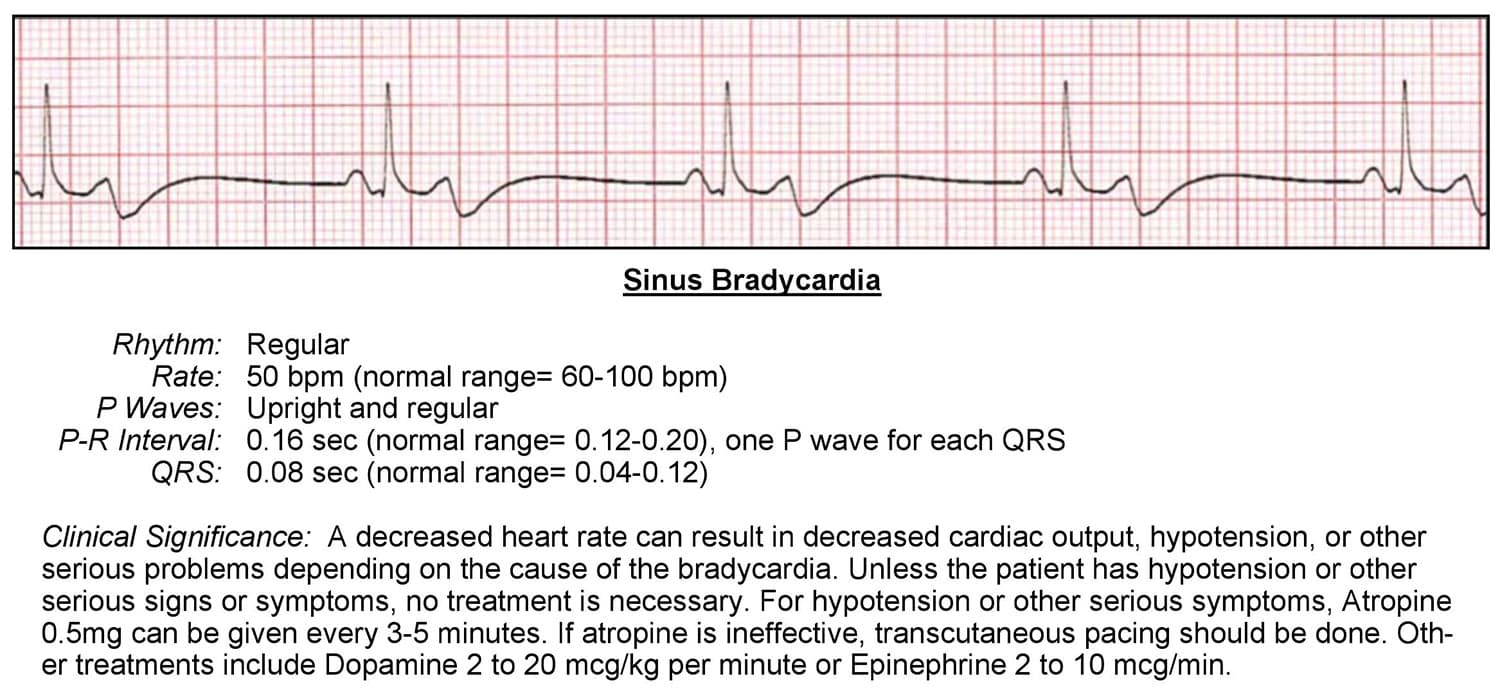Bradycardia is a slow rhythm usually found to be under 60 bpm. There can be many forms of bradycardia.
Regardless of the underlying reason, if bradycardia is causing the patient to display bradycardia-related symptoms, it should be treated.

An example of a bradycardia patient’s ECG might show the following:
- Rhythm is regular
- Rate is slow at less than 60 beats per minute
- P waves are present, upright, and consistent
- PR interval is between .12 and .20 seconds
- The QRS complex is between .06 and .11 seconds
- P wave to QRS ratio is 1:1
Cardiac Interpretation:
Because sinus bradycardia can result from so many things, it is important to get a thorough patient history, including a medication list and any other past medical problems. If the patient is showing symptoms related to the bradycardia, the patient should be treated and underlying causes should be investigated.